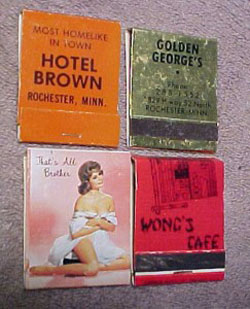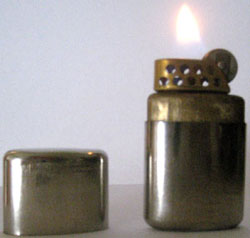 Before the invention of the match people used, small sticks of pinewood impregnated with sulfur. These were invented in China around AD 577 during the Northern Qi Dynasty. At the slightest touch of fire these sticks would light. These were originally called "light-bringing slave", but soon became known as 'fire inch-stick'.
Before the invention of the match people used, small sticks of pinewood impregnated with sulfur. These were invented in China around AD 577 during the Northern Qi Dynasty. At the slightest touch of fire these sticks would light. These were originally called "light-bringing slave", but soon became known as 'fire inch-stick'.
In 1827, John Walker, English chemist and apothecary, discovered that if he coated the end of a stick with certain chemicals and let them dry, he could start a fire by striking the stick anywhere. These were the first friction matches and they where called "congreves". These early matches had a really bad odor. A man named Samual Jones patented the idea and called his matches lucifer matches. In the Netherlands matches are still called lucifers.
Three years later in 1830, a French chemist, Charles Sauria, created a match made with white phosphorous to remove the odor. White phosphorous is poisonous. The new matches caused an ailment called phossy jaw, There was enough white phosphorus in one pack to kill a person.
Safety matches were invented in 1844 by the Swede Gustaf Erik Pasch. In 1855, safety matches were patented by Johan Edvard Lundstrom of Sweden and used red phosphorus. Joshua Pusey invented book matches in 1889 and they where called "Flexibles".
 The earliest known commercial advertising on matchbooks was created in 1895, by the Mendelson Opera Company. The ad read, "A cyclone of fun - powerful caste - pretty girls - handsome ward-robe - get seats early."
The earliest known commercial advertising on matchbooks was created in 1895, by the Mendelson Opera Company. The ad read, "A cyclone of fun - powerful caste - pretty girls - handsome ward-robe - get seats early."
 Lighters
Lighters
Lighters were first invented in the 16th century. These early lighters were converted flintlock pistols that used gunpowder, not the type of lighters we know today. In 1816 a new type of lighter was invented called "Dobereiner's Lamp" (named after its creator, a German chemist named Johann Wolfgang Dobereiner). Still this lighter did not use butane or oil as fuel, it used hydrogen (which is explosive). The device was very large, highly dangerous and quite expensive The patenting of Ferrocerium by Carl Auer von Welsbach in 1903 has made modern lighters possible. When scratched, it produces a large spark which is responsible for lighting the fuel of many lighters, and is suitably inexpensive for use in disposable items. In 1932 George G. Blaisdell invented the Zippo lighter. The Zippo was noted for its reliability, and was marketed as "Wind-Proof". Most early Zippos used naphtha, an oily liquid that comes from petroleum as a fuel source. In the 1930's lighters switched from naphtha to butane as the fuel source.
First friction match developed in 1827, first lighter developed in 1816. So the lighter was developed before the match.